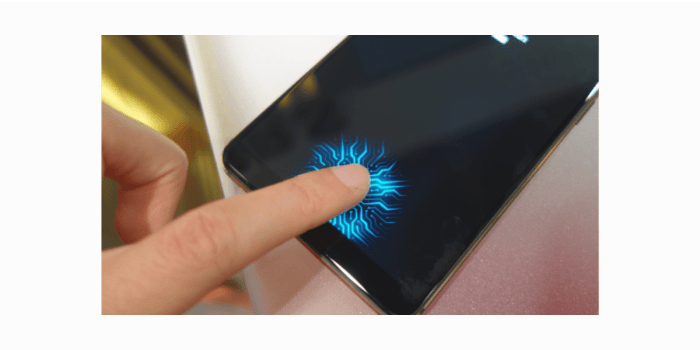Smartphone camera sensors are the unsung heroes behind the stunning photos and videos captured on our phones. From capturing the vibrant colors of a sunset to freezing a moment in time, these tiny marvels are constantly evolving, pushing the boundaries of what’s possible with mobile photography. This journey explores the core components and technological advancements that have transformed the way we see the world through our smartphones, offering a unique perspective on the future of image capture.
We’ll delve into the fundamental principles of sensor technology, comparing different types and sizes, and revealing how they impact image quality. Discover the intricate relationship between sensor resolution, pixel size, and dynamic range, and learn how features like autofocus and image stabilization work to deliver sharp, clear results. Explore the advanced features like dual-pixel autofocus, stacked sensors, and global shutters that enhance the overall experience of photography in smartphones.
Introduction to Smartphone Camera Sensors
Smartphone camera sensors are the unsung heroes behind the stunning photos and videos we capture every day. These tiny but powerful components are responsible for converting light into the digital images we see on our screens. Their evolution has been nothing short of remarkable, transforming mobile photography from a novelty to a primary means of visual communication. Unlike traditional cameras, smartphone cameras offer unparalleled convenience, allowing us to capture and share moments instantly.
The continuous advancements in sensor technology are the driving force behind the ever-improving image quality we experience in our smartphones.
Sensor Technologies and Types
Different sensor technologies underpin the functionality of smartphone cameras, each with its own operational principles and performance characteristics. Understanding these differences is crucial to appreciating the nuances of image quality.CMOS (Complementary Metal-Oxide-Semiconductor) sensors are the dominant technology in smartphones due to their low power consumption, compact size, and cost-effectiveness. They work by converting photons (light particles) into electrons, which are then converted into digital signals.CCD (Charge-Coupled Device) sensors, while offering superior image quality in certain aspects like noise reduction, are less common in smartphones because of their higher power consumption and manufacturing costs.
CCDs transfer the charge from each pixel to a single output node, leading to high sensitivity and low noise.Comparing these, CMOS sensors generally have lower sensitivity and higher noise levels than CCDs, but their smaller size and lower power consumption make them ideal for smartphones. CCDs offer better dynamic range, which translates to more detail in both highlights and shadows, but are less practical for mobile devices.
Sensor Size and Its Effects
Sensor size plays a pivotal role in determining the quality of images captured by a smartphone camera. A larger sensor can capture more light, leading to improved performance in low-light conditions and a shallower depth of field. This means more light can be captured, resulting in brighter and less noisy images, particularly in dim environments.Here’s a comparison of sensor sizes and their implications:
| Sensor Size | Typical Smartphone Examples | Advantages | Disadvantages |
|---|---|---|---|
| 1/3″ | Older or budget smartphones | Compact, Cost-effective | Smaller pixels, poorer low-light performance |
| 1/2.5″ | Mid-range smartphones | Better low-light performance than 1/3″ | Still smaller than larger sensors |
| 1/1.7″ | High-end smartphones | Excellent low-light performance, shallower depth of field | Can lead to a larger camera bump |
Pixel Size and Its Impact
Pixel size is another critical factor influencing image quality. Larger pixels can capture more light, resulting in less noise and better detail, especially in challenging lighting conditions. However, larger pixels may reduce the overall resolution if the sensor size remains the same.Consider these points:
- Small Pixel Size:
- Pros: Higher resolution, more detail in good lighting conditions.
- Cons: More noise in low light, less dynamic range.
- Large Pixel Size:
- Pros: Better low-light performance, lower noise, improved dynamic range.
- Cons: Lower resolution (potentially), larger sensor size needed.
Sensor Resolution and Megapixels
Megapixels (MP) are often used to measure the resolution of a camera sensor, indicating the total number of pixels. Higher megapixel counts mean more pixels, which translates to potentially more detail in an image, especially when printing photos or cropping them.Pixel binning is a technique used to improve image quality in modern smartphone cameras. It combines the data from multiple adjacent pixels into a single “super-pixel.” This increases the effective pixel size, enhancing low-light performance and reducing noise.
For instance, a camera might combine four 1-micron pixels into one 2-micron pixel.Examples of smartphones employing pixel binning include the Google Pixel series and Samsung Galaxy phones, which often combine multiple pixels to create larger, more light-sensitive pixels, especially in low-light conditions.
Dynamic Range and HDR

Source: meshpedia.com
Dynamic range refers to the range of light intensity a camera sensor can capture, from the darkest shadows to the brightest highlights. A wider dynamic range allows the camera to capture more detail in both shadows and highlights, preventing areas from appearing completely black or blown out.High Dynamic Range (HDR) is a technique used to improve image quality by capturing multiple exposures of the same scene and combining them into a single image.
This process ensures that both the highlights and shadows are well-exposed, resulting in a more balanced and detailed final image.Here’s how HDR works in smartphones:
- The camera takes multiple shots at different exposures.
- The software aligns the images to ensure they are perfectly matched.
- The best-exposed parts of each image are selected and combined.
- The final image is processed to optimize colors and contrast.
Autofocus Systems
Autofocus (AF) systems are essential for ensuring sharp images. Different AF systems are used in smartphone cameras, each with its own strengths and weaknesses.
- Phase Detection Autofocus (PDAF): Uses tiny sensors to detect phase differences in light rays to quickly and accurately focus on a subject.
- Laser Autofocus: Emits a laser beam to measure the distance to the subject, providing fast and reliable focusing, especially in low light.
Here’s a comparison:
- PDAF: Fast and accurate in most conditions, widely used.
- Laser Autofocus: Very fast, reliable in low light, but may have a shorter range.
Image Stabilization Technologies
Image stabilization technologies are designed to reduce blur caused by camera shake, resulting in sharper photos and smoother videos. Both optical image stabilization (OIS) and electronic image stabilization (EIS) play a vital role.OIS uses physical components to counteract camera movement, providing superior stabilization. EIS uses software to analyze movement and adjust the image accordingly.Examples:
- OIS: Found in high-end smartphones like the iPhone 15 Pro and Samsung Galaxy S24 Ultra, offering excellent stabilization for both photos and videos.
- EIS: Commonly used in mid-range smartphones, providing decent stabilization, especially for video recording.
Advanced Sensor Features
Advanced features further enhance smartphone camera capabilities.Dual-pixel autofocus improves focusing speed and accuracy. Stacked sensors allow for more compact designs and improved performance. Global shutter sensors capture the entire scene at once, reducing the “rolling shutter” effect in videos.Here’s a comparison:
| Feature | Description | Advantages |
|---|---|---|
| Stacked Sensors | Layers of the sensor are stacked on top of each other | Improved speed, lower power consumption, and smaller form factor |
| Dual-Pixel Autofocus | Each pixel is divided into two photodiodes | Faster and more accurate autofocus |
| Global Shutter | Captures the entire scene simultaneously | Eliminates the rolling shutter effect, resulting in more natural-looking videos |
Sensor Manufacturing Processes
The manufacturing of smartphone camera sensors involves complex processes.The process involves several steps: wafer fabrication, photolithography, etching, and packaging. These steps must be precise to ensure the quality and performance of the sensors. Challenges include achieving high yields, reducing defects, and scaling production to meet the demand.The stages of sensor manufacturing include:
- Wafer Preparation
- Photolithography
- Etching
- Doping
- Metallization
- Packaging
The Future of Smartphone Camera Sensors
The future of smartphone camera sensors is brimming with exciting possibilities.Emerging trends include the development of advanced computational photography techniques, such as AI-powered image processing, and the integration of new materials and designs. Potential innovations could lead to improved low-light performance, enhanced dynamic range, and even more compact camera modules.
“In the next five years, we can expect to see sensors that not only capture stunning images but also understand the scene in real-time, allowing for truly intelligent and adaptive photography. Expect to see sensors that capture images with a level of detail and dynamic range previously unseen in mobile devices, all while maintaining a sleek and compact form factor.”
Final Thoughts: Smartphone Camera Sensors
From the evolution of sensor technology to the latest innovations, smartphone camera sensors have truly revolutionized how we capture and share our lives. As we look to the future, the possibilities for mobile photography are limitless. With emerging technologies and continued advancements, we can expect even more incredible image quality, dynamic range, and overall performance. Get ready for the next chapter in mobile photography, where your smartphone becomes an even more powerful tool for capturing your world.
